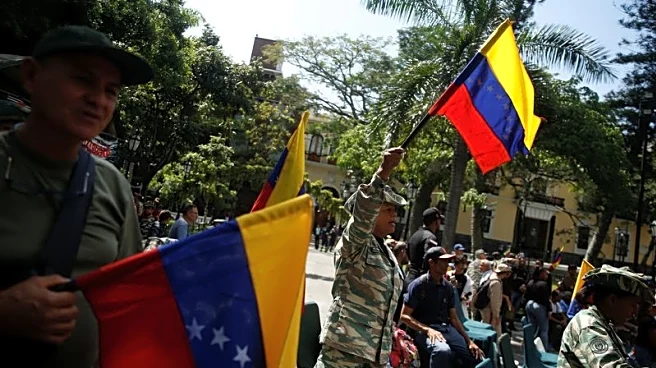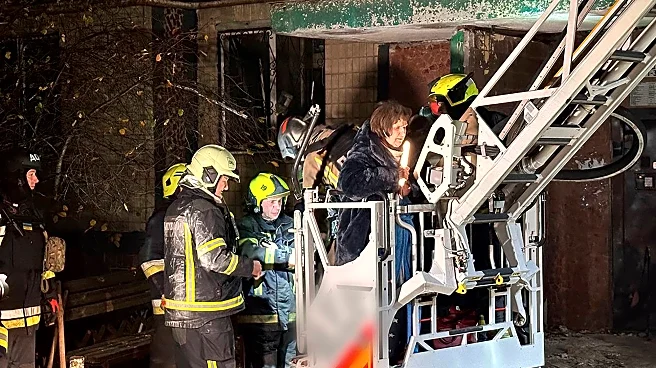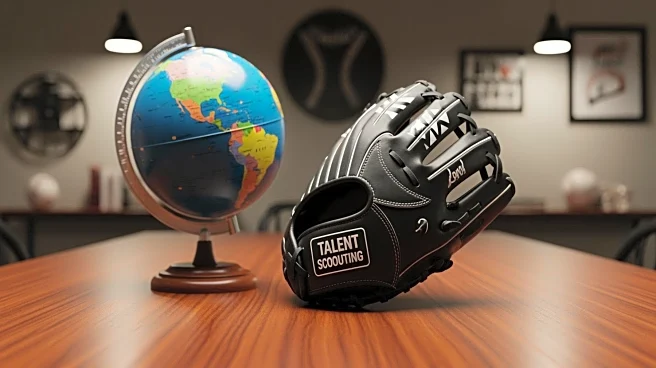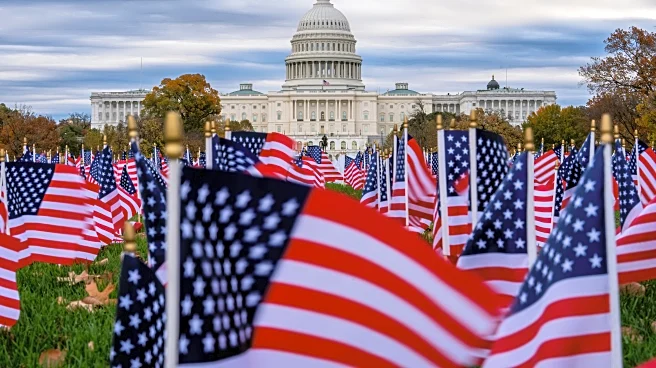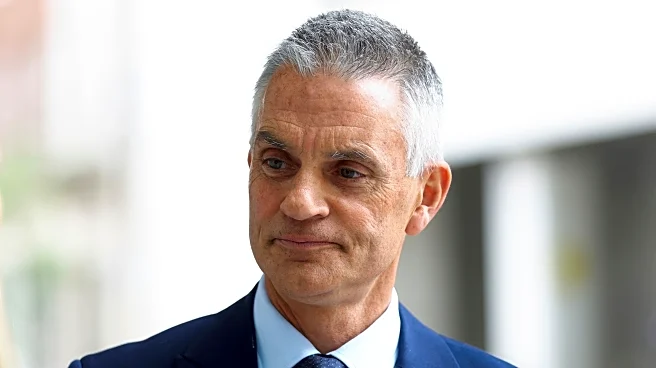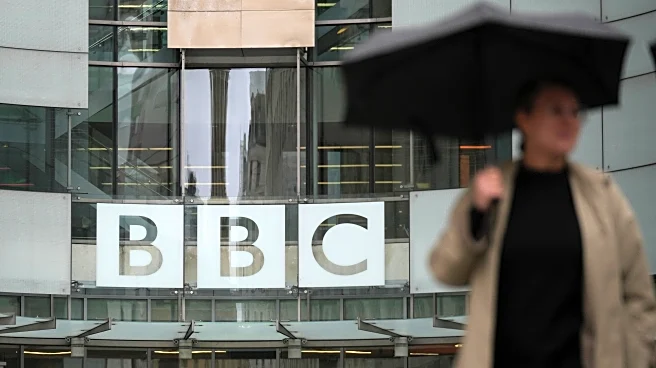(Reuters) -Venezuela is deploying weapons – including decades-old Russian-made equipment – and is planning to mount a guerrilla-style resistance or sow chaos in the event of a U.S. air or ground attack, according to sources with knowledge of the efforts and planning documents seen by Reuters.
The approach is a tacit admission of the South American country's shortage of personnel and equipment.
U.S. President Donald Trump has suggested the possibility of ground operations in Venezuela, saying "the land
is going to be next" following multiple strikes on alleged drug-trafficking vessels in the Caribbean and a large U.S. military build-up in the region. He later denied he was considering strikes inside Venezuela.
Venezuelan President Nicolas Maduro, in power since 2013, says Trump is seeking to oust him and that Venezuelan citizens and the military will resist any such attempt.
The U.S. military dwarfs Venezuela's, which is debilitated by a lack of training, low wages and deteriorating equipment, six sources familiar with Venezuela's military capabilities said.
Some unit commanders have even been forced to negotiate with local food producers to feed their troops because government supplies fall short, two sources with knowledge of state security forces told Reuters.
That reality has led Maduro's government to bet on two potential strategies - including a guerrilla-style response referenced publicly, though without details, by high-ranking officials, and another which officials have not acknowledged.
CREATING ANARCHY ON STREETS
The guerrilla-style defense, which the government has termed "prolonged resistance" and mentioned in broadcasts on state television, would involve small military units at more than 280 locations carrying out acts of sabotage and other guerrilla tactics, according to the sources and several years old planning documents for the tactic seen by Reuters.
The second strategy, called "anarchization," would use the intelligence services and armed ruling-party supporters to create disorder on the streets of capital Caracas and make Venezuela ungovernable for foreign forces, said one source with knowledge of defense efforts and another source close to the opposition.
It was unclear when the government might deploy each of the tactics, which sources said are complementary, in case of U.S. attack.
Any resistance strategy faces long odds of success, the sources acknowledged.
"We wouldn't last two hours in a conventional war," said a source close to the government.
Another source with knowledge of defense and security inside Venezuela said that the country was not "prepared or professionalized for a conflict," despite government assertions to the contrary. "We're not ready to face one of the world's most powerful and well-trained armies," the source said.
The communications ministry, which handles media inquiries on behalf of the Venezuelan government, did not respond to questions.
Government officials publicly have been dismissive of a U.S. military threat. "They think that with a bombing they'll end everything. Here in this country?" scoffed Interior Minister Diosdado Cabello on state television in early November, while Maduro has repeatedly praised the "soldiers of the homeland" as heirs of independence hero Simon Bolivar.
SOLDIER SALARIES ARE LOW
Maduro has enjoyed strong military loyalty by following the strategy of his predecessor Hugo Chavez, who placed officers in government roles as ministers or heads of state-run companies to ensure allegiance.
Military leadership backed Maduro's victory in the 2024 election, despite evidence, backed by many international observers, that the opposition candidate had resoundingly won.
Venezuelan troops, however, have to deal with poor working conditions and there could be desertions in the event of an attack, the sources said.
Rank-and-file soldiers earn roughly $100 a month in local currency - far short of the estimated $500 monthly cost of a basic food basket, according to April data from the Venezuelan Teachers Federation's Center for Documentation and Social Analysis.
In recent years, their primary experience has been confronting unarmed civilians during street protests, the source close to the opposition said.
Maduro has said there are 8 million civilians training in militias to defend Venezuela, and some civilians have told Reuters in recent months that they are ready and willing to die to defend their homeland against a foreign force.
But a source with defense and security knowledge estimated that in an anarchization scenario, just 5,000 to 7,000 people would participate, including intelligence personnel, armed ruling-party supporters and militia members.
Meanwhile, there are some 60,000 members of the Army and National Guard that the government would deploy for its guerrilla-style "war of resistance," the source said.
EQUIPMENT IS OLD
The military's equipment - much of it Russian-made and decades-old - is lacking, the sources told Reuters.
Venezuela bought some 20 Sukhoi fighter jets from the Russian company in the 2000s, but "next to the U.S. B-2s, they are nothing," said the source with defense and security knowledge, adding that Venezuela's Russian-made helicopters, tanks and shoulder-fired missiles capable of destroying low-flying airplanes are also outdated.
Russia's foreign ministry said last week it was prepared to respond to Venezuela's requests for assistance, while urging against an escalation in tensions. Maduro has appealed to Moscow for repairs to the Sukhoi jets, upgrades to radar systems and the delivery of missile systems.
Venezuela's 5,000 Russian-made Igla missiles have already been deployed, one of the sources said, and military orders are that, upon receiving "the first hit from the gringos, all units should disperse or go with their weapons to fall back or hide at various locations."
"Any military force in the world knows the power of the Igla-S, and Venezuela has no less than 5,000 of them," Maduro said during a recent state television broadcast.
He added that the portable missiles and their operators had been deployed "to the last mountain, the last town, and the last city in the territory."
More than a dozen military training and planning documents dated between 2012 and 2022 and seen by Reuters show a long-term focus on planning for a fight against "imperialist aggressions."
One, from September 2019, details how platoons should position machine guns, grenade launchers and other equipment. It explains the characteristics of a AK-103 assault rifle and how lone combatants can use a compass, the sun and even the stars to orient themselves if they are on the move.
Venezuelan opposition groups, NGOs, Washington and some Latin American governments have accused Maduro's administration and the Venezuelan military of ties to drug trafficking, especially in the country's west, where Colombian guerrilla groups like the National Liberation Army operate and coca, the base ingredient in cocaine, is widely cultivated.
The government has consistently denied such links and says it combats Colombian drug traffickers.
But Maduro may be trying to send a message about the risks of invasion through his appearances on state television, where he regularly shows off military equipment, said Andrei Serbin Pont, a defense and security analyst.
"The underlying message isn't actual military capability but deterrence through chaos: the threat that this equipment could end up in the hands of armed groups, guerrillas, paramilitaries, or reorganized ex-military personnel, worsening violence and instability during a potential transition," Serbin said.
(Editing by Julia Symmes Cobb and Rosalba O'Brien)
